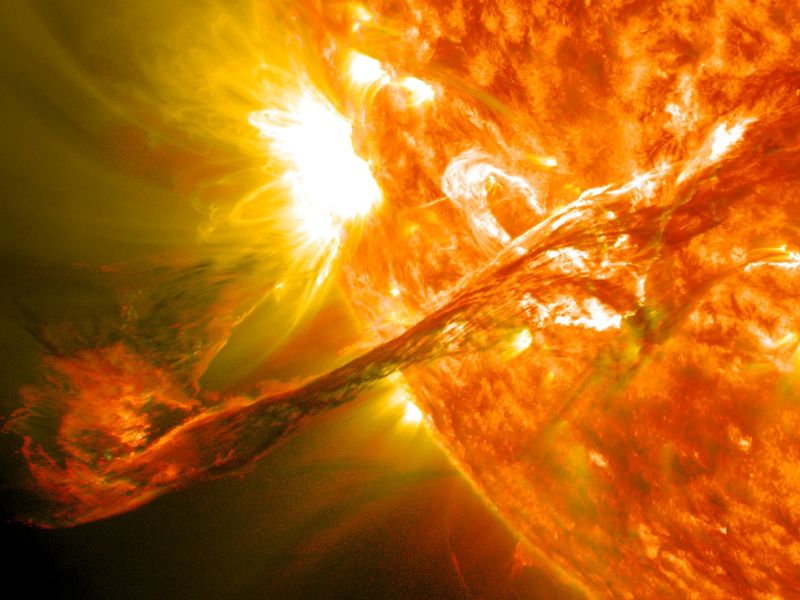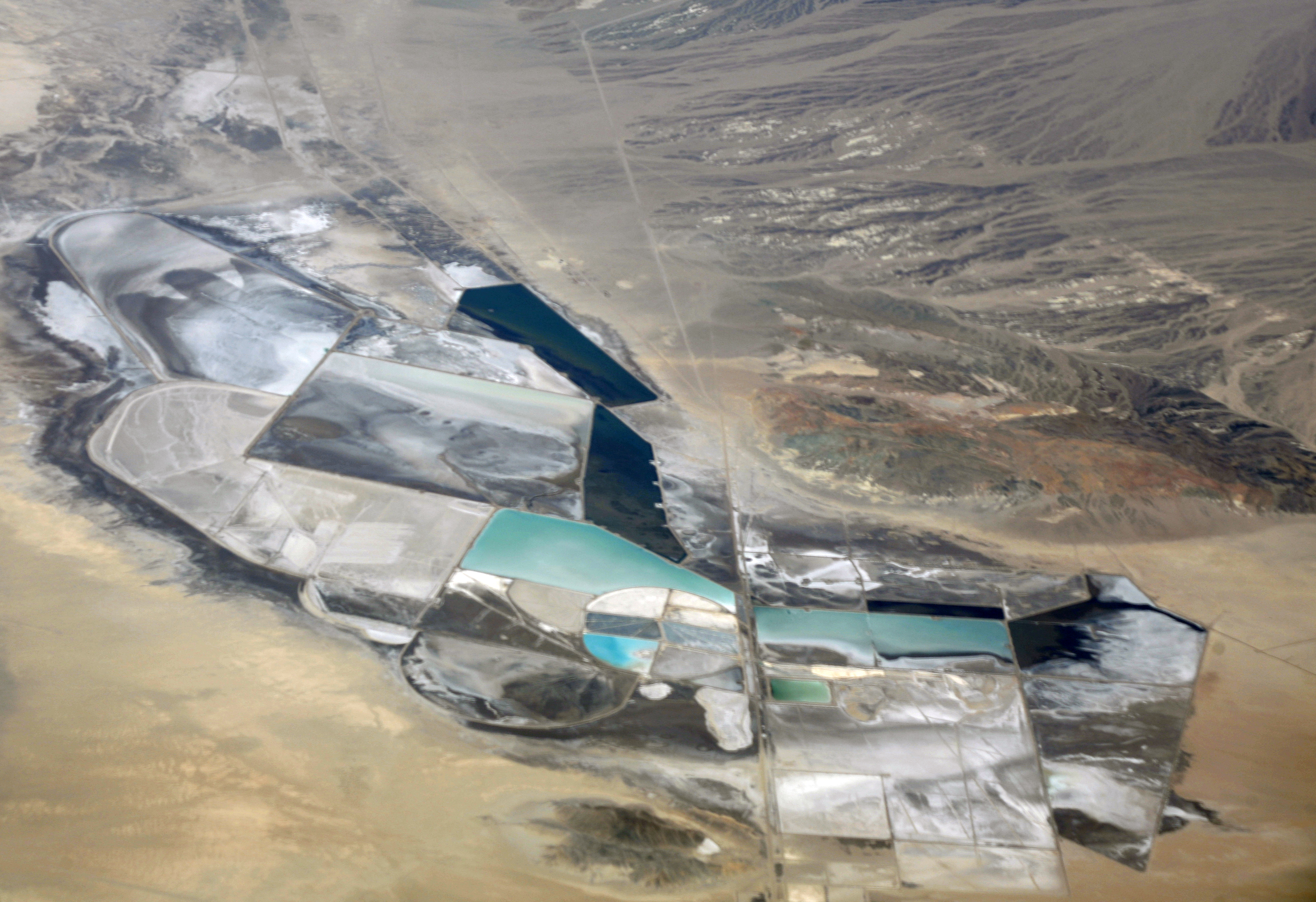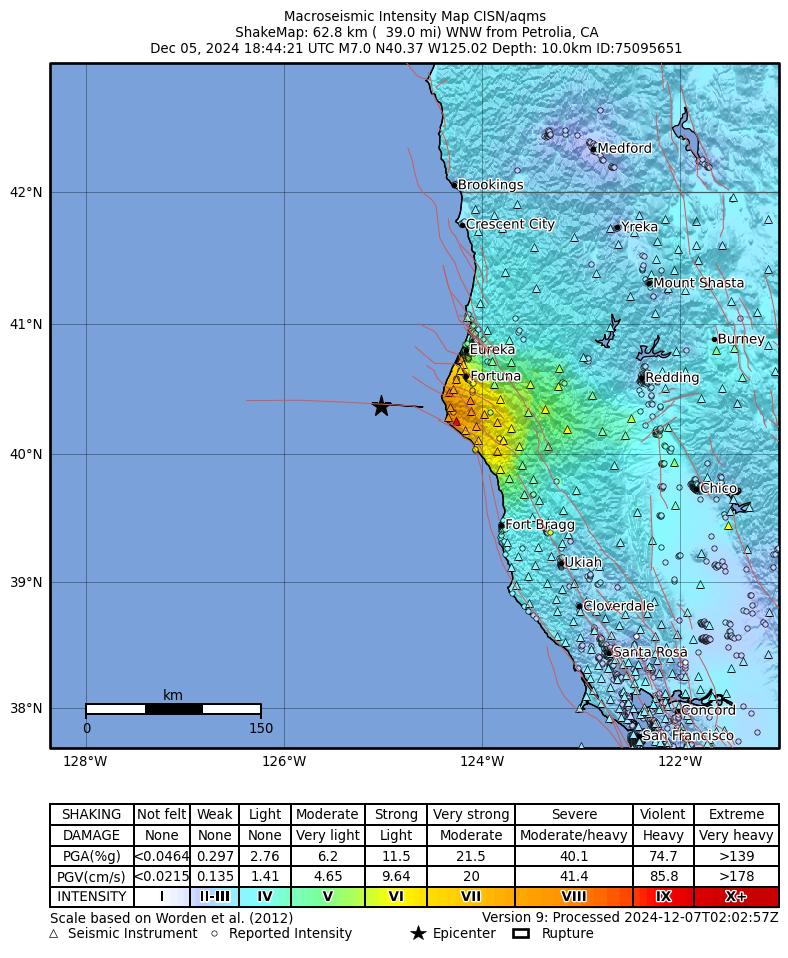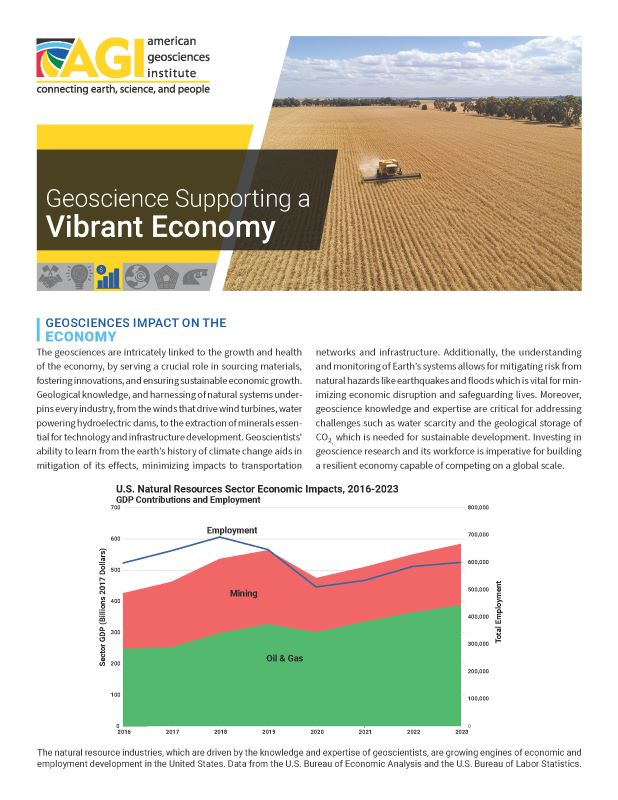Geoscience Supporting a Vibrant Economy

Geoscience fuels innovation, resilience, and economic vitality by powering industries, securing critical resources, and mitigating natural hazards while driving sustainable solutions and safeguarding the infrastructure that shapes our future.
Geosciences Impact on the Economy
Ensuring Critical Mineral and Energy Security
As the world shifts towards cleaner and more sustainable energy sources, geoscience knowledge and technologies are central to sourcing critical minerals and siting locations for renewable energy.
Securing Supply Chains
International commerce is critical to U.S. economic vitality. International conflicts, the imposition of sanctions, and their reciprocal responses threaten U.S. national security and supply chains, driving demand for geoscientists to develop domestic sources of energy and minerals.
Mitigating the Impact of Natural Hazards
Natural disasters, enhanced in severity and frequency by climate change, can have huge negative impacts on the economy. Through prediction and mitigation, geoscientists can reduce risk to life and property.
Supporting the Insurance Industry
Geoscientists have become increasingly more involved by the insurance and re-insurance industries to aid in risk assessment, hazard prediction, and assessments to mitigate expenses for covering claims related to natural disasters.
Leading Sustainable Agriculture
Agriculture is critical to the nation’s food security, and vital to our economy. Geoscientists, specifically soil scientists, play a critical role in understanding the genesis, distribution, and productivity of soils while hydrogeologists are key to sourcing water for irrigation, and monitoring groundwater supplies.
Catalyzing an Innovative Workforce
A robust innovative economy depends on a well-educated workforce, and in the digital and technological economy of today, STEM literacy is essential.
Water Availability
Water availability is critical to all aspects of the economy, not just for drinking and agriculture. Without sufficient water, energy generation and manufacturing would not be possible. Geoscientists discover appropriate ground and surface water sources and advise on appropriate resource management.
Environmental Compliance
Effective environmental stewardship yields direct economic returns, from improved community health, reduced liabilities, easier capital access, and improved efficiencies. Geoscientists are often the point person for companies in meeting regulatory compliance needs for NEPA.
Exemplars of Impacts of Geoscience on the Economy

Geoscientists play a vital role in finding and producing important minerals that are essential for the energy transition, national security, and consumer goods. Discovery of new deposits, in increasingly extreme environments, help build access to minerals, but also the opportunity to extract and process those resources with clean and efficient modern processes. This improves material access, reduces costs, and minimizes environmental impacts. A prime example is the extraction of lithium from brines in Nevada, yielding a major new source of an increasingly critical element.
The economy can suffer greatly from natural disasters, which are becoming more intense and common due to climate change. Geoscientists study the origin and consequences of natural disasters such as landslides, sinkholes, floods, earthquakes, and fires. More frequent and ferocious fires in the United States have led to more widespread destruction and deaths. By understanding the post-fire damage to soils and landcover, geoscientists can assist with the reclamation of fire-ravaged landscapes and help mitigate the future risks and impacts on society.
The insurance industry requires risk assessment, environmental protection, and land management, which has increased the need for geoscientists. The employment of geoscientists in the insurance industry rose 21 percent from 2010 to 2020. Moreover, geoscience research helps to reduce risk from natural processes, leading to economic savings that can prevent insurance claims and lost productivity.
If farmers want to use groundwater for irrigation, they need hydrogeologists and hydrologists to map and describe the aquifers that provide it. Hydrogeologists also monitor groundwater levels to guide water management. Soils scientists help farmers find the best ways to improve their productivity, conserve soils, maximize irrigation efficiency, and determine the fate and transport of pesticides, herbicides, and fertilizers in soil and water.
Geosciences play a vital role in the creation of an innovation economy through training and investments in science, technology, engineering, and mathematics (STEM) fields. Many federal departments acknowledge this need and support STEM education and literacy programs. The Geoscience Directorate of the National Science Foundation requested $1.24 billion for 2023 to fund the general progress of knowledge and stimulate technological innovation.
Case Studies
Examples of Relevant Legislation and Policy
Executive Orders
- 14082: Outlines implementation of energy and infrastructure provisions of the inflation reduction act, including incentivizing clean energy usage on the corporate and individual levels.
- 13953: Declared National Emergency over foreign reliance (particularly with regard to China) on critical mineral resources. Ordering examination of mineral processing.
- 13744: Establishes preparations for extreme space weather events, particularly those that may impact technology and energy infrastructure.
Congressional Legislation
- H.R. 5770: The Water Data Improvement Act, reauthorizes the SECURE Water Act that supports national stream and groundwater monitoring
- S.1871: Implement intergovernmental coordination (federal, state, tribes, local) to address reliance on foreign sources for critical minerals, particularly with regard to China
- Public Law 117-58: Infrastructure Investment and Jobs Act (2021)- improve infrastructure to maintain supply chains; increases wildland firefighter pay
- Public Law 115-334: Farm Bill
Relevant Federal Agencies
- U.S. Geological Survey (Interior)
- Department of Energy — National Nuclear Security Administration; Fossil Energy and Carbon Management; Office of Science; Energy Information Administration
- National Weather Service (Commerce)
Related National Academy Reports
- Community-Driven Relocation: Recommendations for the U.S. Gulf Coast Region and Beyond (2024)
- Critical Issues in Transportation for 2024 and Beyond (2024)
- Accelerating Decarbonization in the United States: Technology, Policy, and Societal Dimensions (2023)
- Carbon Dioxide Utilization Markets and Infrastructure: Status and Opportunities: A First Report (2023)
- Corrosion of Buried Steel at New and In-Service Infrastructure (2023)
- Developing a Highway Framework to Conduct an All-Hazards Risk and Resilience Analysis (2023)
Non-Partisan Non-Profit Expertise
- American Association of Petroleum Geologists
- American Institute of Professional Geologists
- Association of American State Geologists
- Association of Environmental and Engineering Geologists
- Society of Economic Geologists
- Society of Exploration Geophysicists
- Society for Mining, Metallurgy, and Exploration
- Soil Science Society of America



